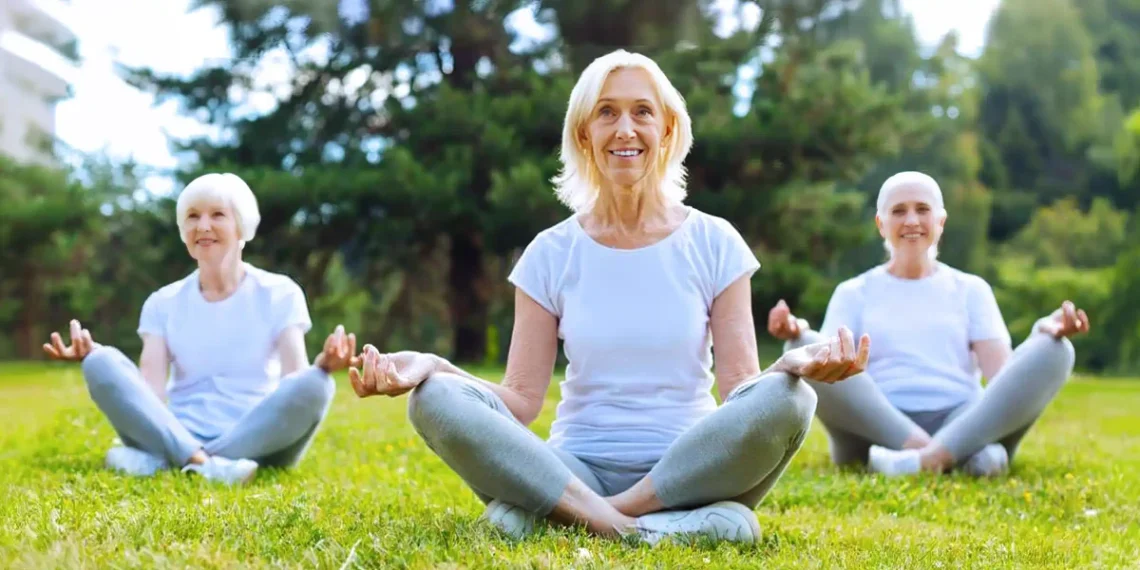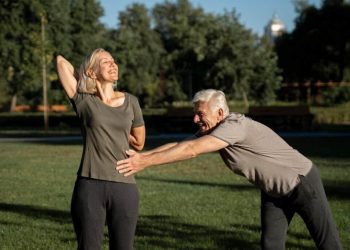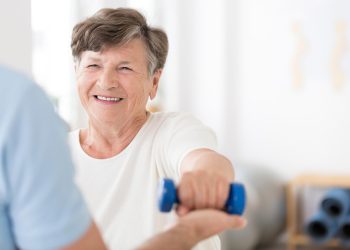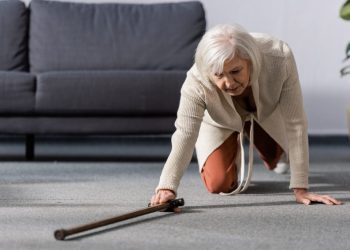Growing older is a journey of wisdom, experience, and adaptation. While our bodies may change with time, the fundamental human need for movement and vitality remains constant. Gentle exercise for elderly individuals isn’t just about maintaining physical health—it’s about preserving independence, nurturing joy, and embracing each day with confidence and strength.
The beauty of gentle exercise lies in its accessibility. You don’t need expensive equipment, a gym membership, or exceptional athletic ability. What you need is the willingness to move your body with kindness and intention, respecting where you are today while gently encouraging progress for tomorrow.
The Profound Benefits of Staying Active
The advantages of regular gentle exercise extend far beyond the physical realm, touching every aspect of wellbeing and quality of life.
Physical Health Benefits
Regular gentle exercise offers remarkable benefits for aging bodies. Movement helps maintain muscle mass and bone density, which naturally decline with age. This is particularly important for preventing falls and maintaining the ability to perform daily activities independently—from climbing stairs to carrying groceries to playing with grandchildren.
Cardiovascular health improves with consistent gentle exercise, reducing the risk of heart disease, stroke, and high blood pressure. Even modest amounts of movement can help regulate blood sugar levels, making exercise a valuable tool for managing or preventing type 2 diabetes.
Joint health often improves with appropriate exercise. While it may seem counterintuitive, gentle movement can actually reduce arthritis pain by strengthening the muscles around joints and improving flexibility. Exercise also promotes better circulation, which helps deliver nutrients throughout the body and supports the immune system.
Balance and coordination improve through regular practice, significantly reducing fall risk—one of the most serious health concerns for older adults. Better balance means greater confidence in daily activities and reduced fear of injury.
Mental and Emotional Wellbeing
The mental health benefits of exercise are equally compelling. Physical activity stimulates the release of endorphins, the body’s natural mood elevators, which can help combat depression and anxiety. Regular exercise has been shown to improve sleep quality, helping address the insomnia that often accompanies aging.
Cognitive function benefits significantly from regular movement. Studies have demonstrated that exercise can help maintain memory, processing speed, and executive function. It may even reduce the risk of cognitive decline and dementia. The combination of physical movement, coordination challenges, and sometimes social interaction provides powerful brain stimulation.
Exercise also offers a sense of accomplishment and control. In a time of life when many things feel beyond our control, the ability to set goals, practice regularly, and see improvement provides invaluable psychological benefits.
Social Connection
Many forms of gentle exercise offer opportunities for social engagement. Group classes, walking clubs, or water aerobics sessions create spaces for friendship, conversation, and community. These social connections are vital for mental health and can provide motivation to maintain a regular exercise routine.
Appropriate Low-Impact Exercises for Seniors
The key to sustainable exercise for elderly individuals is finding activities that are enjoyable, safe, and appropriately challenging. Here are excellent options to consider:
Walking
Walking remains one of the most accessible and beneficial forms of exercise. It requires no special equipment beyond comfortable, supportive shoes, and can be done almost anywhere. Start with short distances—even five to ten minutes—and gradually increase as comfort and endurance improve.
Walking offers flexibility in intensity. A gentle stroll provides light exercise and fresh air, while a brisker pace increases cardiovascular benefits. Walking with a friend or family member adds social benefits while providing an extra safety measure.
Consider walking in shopping malls during inclement weather, joining a walking group, or exploring local parks and nature trails. The changing scenery makes walking more enjoyable and provides mental stimulation along with physical activity.
Water-Based Exercise
Water aerobics and swimming are exceptional choices for elderly individuals, particularly those with joint pain or arthritis. Water provides natural resistance for strengthening muscles while supporting body weight, reducing stress on joints. The buoyancy of water makes movements feel easier and less painful while still providing an effective workout.
Many community centers and pools offer water aerobics classes specifically designed for seniors. These classes typically include exercises for strength, flexibility, and cardiovascular fitness, all adapted for the aquatic environment. The social atmosphere of group classes adds to their appeal.
For those who enjoy swimming, gentle laps or simply moving through the water provides excellent low-impact exercise. Even walking back and forth in the shallow end offers significant benefits.
Chair Exercises
Chair exercises are perfect for those with limited mobility, balance concerns, or who are just beginning their fitness journey. A sturdy chair becomes equipment for a full-body workout, providing support and stability while allowing for meaningful movement.
Chair exercises can include seated marching, arm circles, leg extensions, seated twists, and gentle strength training with light weights or resistance bands. Many excellent chair exercise videos and classes are available online or through senior centers, making this form of exercise highly accessible.
Tai Chi
This ancient Chinese practice has gained recognition as an ideal exercise for older adults. Tai chi involves slow, deliberate movements combined with deep breathing and mental focus. It’s often described as “meditation in motion.”
The benefits of tai chi are well-documented: improved balance, flexibility, strength, and stress reduction. The slow, controlled nature of the movements makes it very safe, while the focus required provides cognitive benefits. Many communities offer tai chi classes specifically for seniors.
Yoga for Seniors
Gentle yoga or chair yoga offers wonderful benefits for flexibility, balance, strength, and stress reduction. Senior-focused yoga classes modify traditional poses to accommodate varying abilities and mobility levels.
Yoga’s emphasis on breathing and mindfulness provides mental clarity and relaxation alongside physical benefits. The gentle stretching helps maintain range of motion and can ease chronic pain. Many older adults find yoga’s holistic approach particularly appealing.
Strength Training
Light strength training is crucial for maintaining muscle mass and bone density. This doesn’t mean lifting heavy weights—resistance bands, light dumbbells (one to five pounds), or even household items like soup cans can provide effective resistance.
Focus on major muscle groups: legs, arms, back, and core. Simple exercises like bicep curls, leg lifts, and wall push-ups can be remarkably effective. Strength training two to three times per week, with rest days in between, is generally recommended.
Stretching and Flexibility Work
Dedicated stretching sessions help maintain range of motion, reduce stiffness, and prevent injury. Gentle stretching should be part of every exercise session, serving as both warm-up and cool-down.
Focus on major muscle groups and areas that tend to tighten with age: hamstrings, hip flexors, shoulders, and back. Hold stretches gently for 15 to 30 seconds without bouncing. Stretching should feel comfortable, never painful.
Essential Safety Considerations
Safety must always be the top priority when exercising at any age, but it becomes especially important for elderly individuals.
Consult Healthcare Providers
Before beginning any new exercise program, consult with your doctor or healthcare provider. This is particularly important if you have chronic health conditions, take multiple medications, have a history of falls, or haven’t been physically active recently. Your healthcare provider can offer guidance on appropriate activities and any necessary precautions.
Start Slowly and Progress Gradually
Patience is vital. Begin with short sessions—even five to ten minutes—and gradually increase duration and intensity over time. It’s much better to do a little bit regularly than to overdo it and become injured or discouraged.
Listen to your body and respect its signals. Some muscle soreness after exercise is normal, but sharp pain, dizziness, chest pain, or severe shortness of breath are warning signs that require immediate attention and medical consultation.
Create a Safe Exercise Environment
Exercise in safe, well-lit spaces free from tripping hazards. If exercising at home, ensure adequate space and remove obstacles like loose rugs or clutter. When walking outdoors, choose even surfaces and avoid cracked sidewalks or uneven terrain.
Wear appropriate footwear with good support and non-slip soles. Loose, comfortable clothing that allows for full range of motion is ideal. Stay hydrated, especially during longer exercise sessions.
Use Support When Needed
There’s no shame in using assistive devices. A sturdy chair, railing, or walking aid can provide the support needed to exercise safely. For balance exercises, always practice near a stable support that you can grab if needed.
Warm Up and Cool Down
Always begin with a gentle warm-up to prepare muscles and joints for movement. This might include light walking, gentle arm circles, or easy stretching. Similarly, end each session with a cool-down period that includes stretching and gradual slowing of movement.
Be Mindful of Chronic Conditions
Adapt exercises to accommodate any health conditions. Those with arthritis may need to avoid certain joint positions. People with osteoporosis should avoid forward-bending exercises that could stress the spine. Those with balance issues should prioritize stability and support.
Getting Started: Practical Steps
Taking the first step toward a more active lifestyle can feel daunting, but it doesn’t have to be.
Set Realistic Goals
Begin with achievable objectives. Perhaps your goal is simply to walk for ten minutes three times per week, or to attend one chair exercise class. Small successes build confidence and create sustainable habits.
Find What You Enjoy
Exercise shouldn’t feel like punishment. Explore different activities to discover what brings you pleasure. You’re much more likely to stick with activities you genuinely enjoy.
Establish a Routine
Consistency matters more than intensity. Choose specific times for exercise and treat them as important appointments with yourself. Morning routines work well for many people, while others prefer afternoon or early evening activity.
Exercise with Others
Having an exercise buddy provides motivation, accountability, and social connection. Join a class, invite a friend or family member to walk with you, or participate in senior center activities.
Track Your Progress
Keep a simple log of your activities. Noting what you’ve accomplished provides motivation and helps you see progress over time. Celebrate milestones, whether it’s walking a longer distance or completing a certain number of exercise sessions.
Be Patient and Kind to Yourself
Some days will be better than others, and that’s perfectly normal. Don’t be discouraged by setbacks. If you miss a session or two, simply return to your routine when you’re able. The goal is long-term consistency, not perfection.
Conclusion: Embracing Movement at Every Age
Gentle exercise for elderly individuals is a gift you give yourself—a daily investment in health, independence, and quality of life. Every movement, no matter how small, is valuable. Every session contributes to strength, flexibility, and wellbeing.
Remember that it’s never too late to start. Whether you’re 65 or 95, whether you’re quite active or just beginning to move more, your body will respond positively to appropriate, consistent exercise. You deserve to feel strong, capable, and confident in your body.
Approach exercise with compassion for yourself, celebrating what your body can do rather than mourning what has changed. Move with intention, exercise with joy, and know that each step, stretch, and movement is an act of self-care that honors the remarkable journey of your life.
The path to better health doesn’t require dramatic transformations or heroic efforts. It simply asks for gentle, consistent attention to movement—one day, one step, one stretch at a time. Your future self will thank you for the gift of continued mobility, independence, and vitality that gentle exercise provides.






